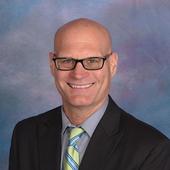Agenda
Please note: all timings are BST, to view start times in your local timezone, please click here.
-
- Session four: The EU Regulation on Ecodesign for Sustainable Products
-
An update on the Sustainable Products Directive
-
Digital product passports
- What the digital product passport (DPP) will introduce and the expected pilots/implementation/roll out; and
- ECOS position on the DPP, how it will support sustainable products, and what points will need to be strengthened for it to deliver on its ambitions
-
Challenges for sustainability in 2022
- Keeping on top of the fast-pace regulatory environment;
- Embedding circular economy thinking;
- Expanding value chain transparency and integration; and
- Connecting internally.
-
Q&A
-
Break
-
- Session five: Circular Economy
-
Chemicals and a right to repair for electronics
- Introduction to Right to Repair campaign;
- Overview of EU legislation on electronics;
- Ecodesign for smartphones;
- Repair and RoHS – how should the revision treat repair?;
- Should product policy be used to address chemicals;
- Example of displays in ecodesign; and
- Opportunities for using product passports and incentivising transparency.
-
Safe and circular electronics
- The need for a safe and just circular economy in electronics;
- How to design safe and circular electronics from the outset;
- How to prepare and optimise electronics supply chains for circularity; and
- Safe and circular electronics in practice.
-
Q&A
-
Lunch break for 60 minutes
-
- Session six: Global Supply Chain Issues
-
What are the latest supply chain challenges facing the electronics industry
- A new era of expectation in Supply Chain Responsibility (SCR) is driving companies like Intel to deliver; and
- SCR Stakeholder interest in both regulatory and voluntary issues continues to rise, while the issues continue to become more difficult to manage.
-
Other global supply chain issues
- Lead times;
- Warehousing/third part warehouse;
- Brokered materials; and
- Recalls/mock trials.
-
Q&A
-
Short break
- Session seven: Global Regulatory Updates
-
USA EPA and TSCA updates for the electronics sector
- Background on risk evaluations and risk management under TSCA
- Recent Updates; and
- PFAS Activities under TSCA.
 Cindy Wheeler
Attorney-adviser, Existing Chemicals Risk Management Division, Office of Pollution Prevention and Toxics, EPA
Cindy Wheeler
Attorney-adviser, Existing Chemicals Risk Management Division, Office of Pollution Prevention and Toxics, EPA -
Regulatory trends in the US including Cal Prop.65 and New York fire retardants ban.
- Refresher on California’s Proposition 65, including details on recent amendments, new chemical listings, and current trends that may affect the electronics industry, along with examples of helpful compliance tools;
- Background on New York’s recently-enacted law banning flame retardants in electronic displays, reporting obligations under the law, and potential implications in the electronics industry; and
- Other state laws emerging which are similar to Prop 65 and the NY Fire Retardants Ban and may impact the electronics industry.
-
Impact of international flammability standards & regulations on electronics sustainability
- how standards and regulations can promote sustainable electronics;
- a brief history of international IEC and European CENELAC electronics standards; and
- the US Consumer Product Safety Commission, European Union, and recent New York state bans of organohalogen flame retardants in electronic enclosures
 Arlene Blum
Executive Director, Green Science Policy Institute and Research Associate in Chemistry, Department of Cell and Molecular Biology, University of California at Berkeley
Arlene Blum
Executive Director, Green Science Policy Institute and Research Associate in Chemistry, Department of Cell and Molecular Biology, University of California at Berkeley -
Developments from Canada
- The prohibition of certain toxic substances regulations, 2022;
- Proposed restrictions of decabromodiphenyl ethane (DBDPE), dechlorane plus (DP), hexabromocyclododecane (HBCD), long-chain perfluorocarboxylic acids, their salts and their precursors (LC-PFCA), perfluorooctane sulfonate, its salts and its precursors (PFOS), perfluorooctanoic acid, its salts and its precursors (PFOA), and polybrominated diphenyl ethers (PBDEs); and
- What would make these regulations unique compared to Proposition 65, REACH, and RoHS?
-
Q&A
-
Close of conference

.jpg)






.jpg)

.jpg)
